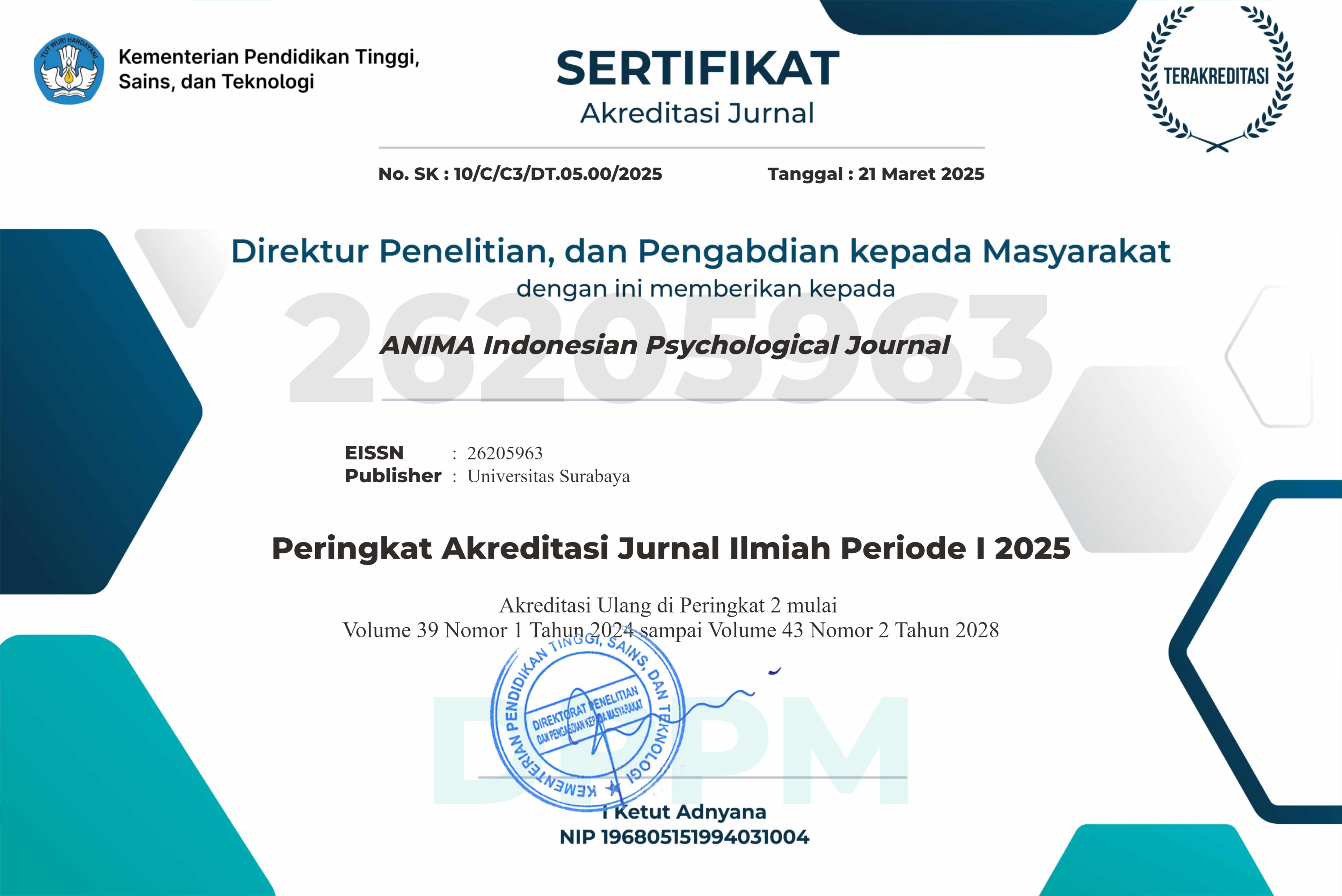Validation of the Emotion Regulation Questionnaire (ERQ): Network Analysis as an Alternative of Confirmatory Factor Analysis (CFA)
 Abstract Views:
6407 times
Abstract Views:
6407 times
 PDF - Full Text Downloads:
9354 times
PDF - Full Text Downloads:
9354 times
Abstract
Construct validity with a confirmatory factor analysis (CFA) method is often used by researchers to identify the structure of psychological measurement. Although this CFA method has provided a complete evaluation of the structure of the test, sometimes there is no consensus reached regarding the number of factors. With the CFA method, researchers determined and compared several models to choose the adequate scale structure, including the number of factors in a scale. The network analysis can play a role to help researchers. In this network analysis, the results of the analysis presented in a visual form, which can facilitate the researchers quickly identify the scale structure based on the relations, displayed in the form of lines (thick-thin) and colors (green-red). Current research aims to test the reliability and construct validity; also, shows that network analysis can be an alternative in presenting visualizations and interpretations compare with factor analysis methods, especially CFA. We used The Emotion Regulation Questionnaire (ERQ) with 954 participants aged 16-57 years. The results are either, with the CFA analysis method or network analysis; it is evident that ERQ has two factors, namely suppression and reappraisal. The results show that the network analysis method can be used as an alternative in identifying the structure of the psychological scale.
Downloads

This work is licensed under a Creative Commons Attribution-NonCommercial-ShareAlike 4.0 International License.
Articles published in ANIMA are licensed under a Creative Commons Attribution-NonCommercial-ShareAlike 4.0 International license. You are free to copy, transform, or redistribute articles for any lawful, non-commercial purpose in any medium, provided you give appropriate credit to ANIMA and the original Author(s), link to the license, indicate if changes were made, and redistribute any derivative work under the same license.
Copyright on articles is retained by the respective Author(s), without restrictions. A non-exclusive license is granted to ANIMA to publish the article and identify itself as its original publisher, along with the commercial right to include the article in a hardcopy issue for sale to libraries and individuals.
By publishing in ANIMA, Author(s) grant any third party the right to use their article to the extent provided by the Creative Commons Attribution-NonCommercial-ShareAlike 4.0 International license.

 DOI:
DOI:




